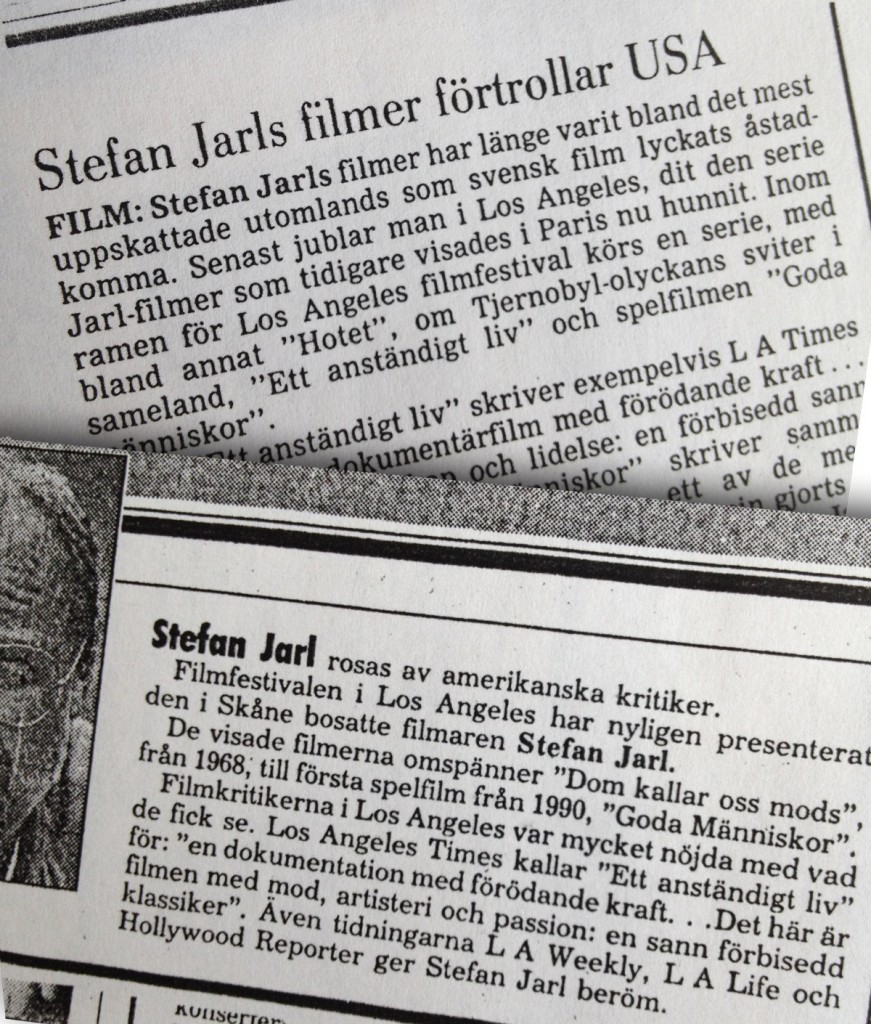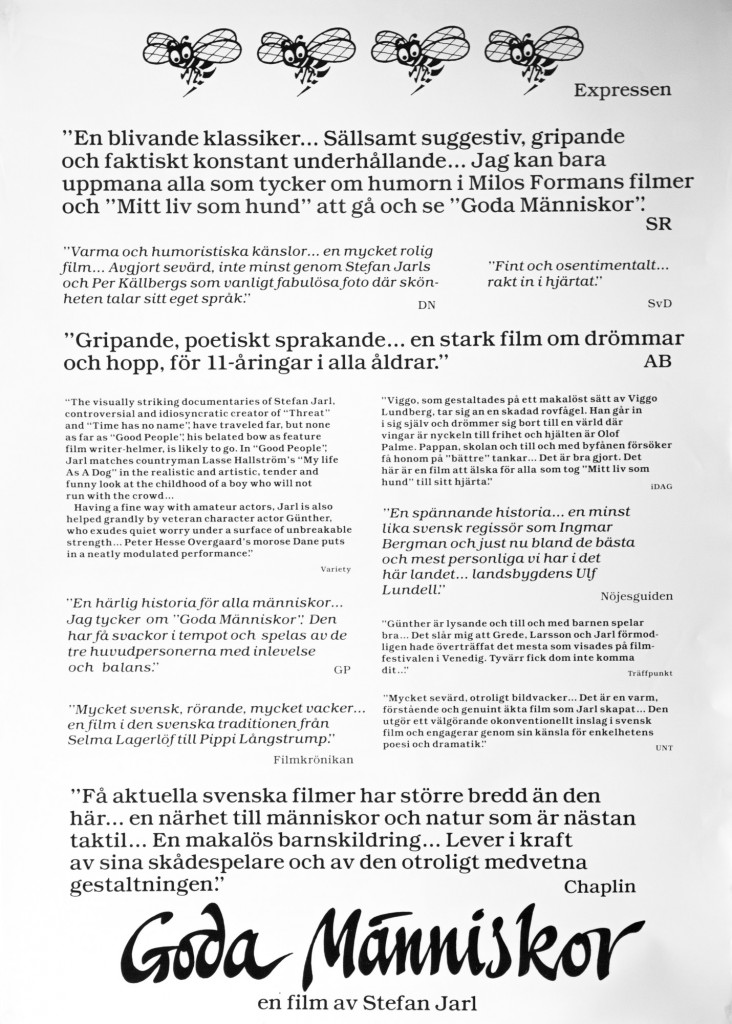Filmer av Stefan Jarl
S-tänk
Snutarna
Dom kallar oss mods
Bekämpa byråkratin
Gisslan berättar
Förvandla Sverige
Bojkott
Vi har vår egen sång-musikfilmen
Ett anständigt liv
Memento mori
Naturens hämnd
En av oss
Själen är större än världen
Hotet/Uhkkadus
Tiden har inget namn
Goda människor
Jåvna, renskötare år 2000
Det sociala arvet
Samernas land/Same Ätnam
Jag är din krigare
Liv till varje pris
De hemlösa
The Jan Troell Band
Skönheten skall rädda världen
Gästgivargår´n
Hårdare tag
Muraren
Terrorister – en film om dom dömda
Paradise lost
Flickan från Auschwitz
Epilog
Kor är fina
Min kompis kajan
Om kajors intelligens
Underkastelsen
Underkastelsen – En bakomfilm
Godheten
Koltrasten
State of Mind
Ojämlikhet dödar
Ett barn är fött
Homo Narrans
All that is solid melts into air
5 år efter Underkastelsen
Innan vintern kommer
Brevfilmen
Själen för fan – kortfilmen
Rannsakan
Själen för fan – långfilmen



